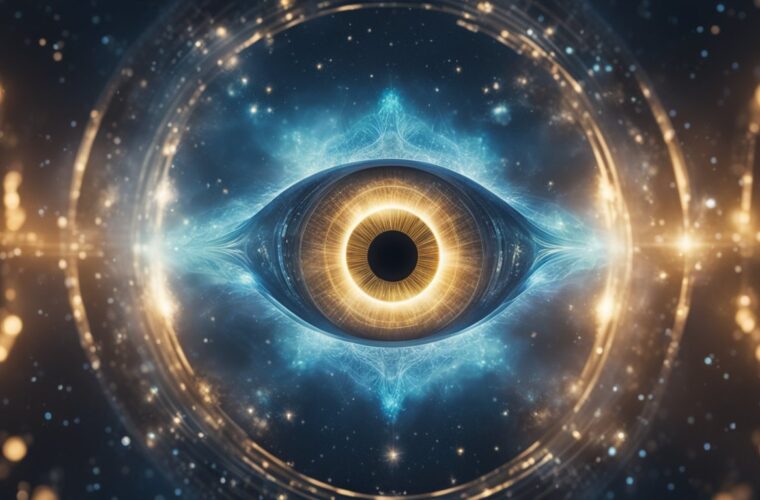The concept of the third eye is an ancient one, rooted in various spiritual traditions. It is often associated with a heightened state of awareness and spiritual awakening. According to these traditions, the third eye symbolizes an inner realm of consciousness that, when awakened, can provide a person with deeper insight and intuition. Awakening the third eye is said to be the gateway to higher levels of consciousness and a different perspective on the physical world.

Awakening the third eye is mentioned in a myriad of mystical and spiritual texts. It is often linked to the pineal gland, a small endocrine gland in the brain that some believe to influence spiritual experience. The process of awakening involves a series of practices and rituals aimed at fostering a greater sense of intuition and connection with the universe. Those who focus on awakening their third eye often report having more profound spiritual experiences and a sense of enlightenment.
People from different cultures and spiritual backgrounds have sought the experience of third eye awakening to cultivate a more profound awareness and live more intuitively. While the journey to awakening the third eye varies for everyone, common themes include meditation, mindfulness, and various forms of introspection that nurture an expanded consciousness. As with any spiritual endeavor, patience, and practice are considered crucial components for those looking to explore this path of self-discovery and enhance their connection with the world around them.
Understanding the Third Eye

The concept of the third eye is an ancient and multifaceted one, intricately connected to various beliefs about the mind, perception, and spirituality. It is closely associated with the pineal gland in the human body, and is thought to play a pivotal role in the awakening of psychic and intuitive abilities.
Historical and Cultural Significance
Throughout history, the third eye has been revered as a powerful symbol of enlightenment and inner knowledge. In Hinduism, it is known as the Ajna chakra, the sixth energy center, which is believed to be the seat of the soul and a gateway to higher consciousness. References to the third eye can be found in Ancient Egypt, often associated with spiritual insight and the divine. The term itself is derived from the Sanskrit name for the sixth chakra, emphasizing its roots in Eastern spiritual traditions.
Anatomy and the Pineal Gland
Considered the physical counterpart of the third eye, the pineal gland is a small endocrine gland in the brain. It regulates the hormones like melatonin, which affects sleep patterns and seasonal functions. Some theories suggest that the pineal gland can become calcified due to various factors, which may hinder its function and, metaphorically, the third eye’s perception.
Third Eye in Energy Practices
In energy practices, the third eye is often seen as essential for achieving a balance in one’s energy flow. Its activation is sometimes described as a “third eye awakening,” which can lead to heightened states of consciousness and the development of intuitive abilities. The chakras, particularly the third eye chakra or Ajna, are focal points in the body used in meditation and yoga to promote energy flow and spiritual connection. Practitioners aim to align and balance the third eye with other chakras to foster harmony within the mind and body.
Cultivating Third Eye Awareness
The journey towards third eye awareness is an intricate blend of honing one’s intuition and aligning lifestyle choices to foster spiritual growth.
Meditation and Activation Techniques
Meditation forms the cornerstone of third eye activation. Through consistent practice, individuals foster concentration and focus, essential for cultivating awareness. Techniques involve:
- Third Eye Meditation: Concentrating on the space between the eyebrows while maintaining steady breath work.
- Chanting of Mantras: Repeating mantras such as “Om” to elevate your vibration and induce a state of peace.
- Visualization Techniques: Imagining a light or an ‘eye’ opening in the forehead can strengthen the mind’s imagination and clarity.
Benefits range from enhanced self-awareness to a feeling of being connected to a higher consciousness.
Lifestyle and Diet
The physical body supports third eye functionality, thus one’s diet and daily habits bear significance.
- Sleep: Aim for 7-9 hours of quality sleep to allow the subconscious mind to explore and expand with vivid dreams.
- Eating Habits: Incorporate foods rich in omega-3s and purple-tinted foods believed to resonate with the third eye energy.
- Connection with Nature: Spending time outdoors can help align one’s energy with the natural world, fostering peace and insight.
Maintaining a mental health conscious lifestyle reduces stress, facilitating a clearer path to third eye awareness.
Intuitive Development and Practices
Developing one’s intuition is crucial for unlocking the third eye’s potential.
- Practice clairvoyance and intuitive reading to hone your perception beyond the physical world.
- Explore astral projection and lucid dreaming as pathways to deeper insight and experiences.
These spiritual practices enhance one’s creativity and imagination, leading to sharper intuition and a more profound engagement with the subconscious.




